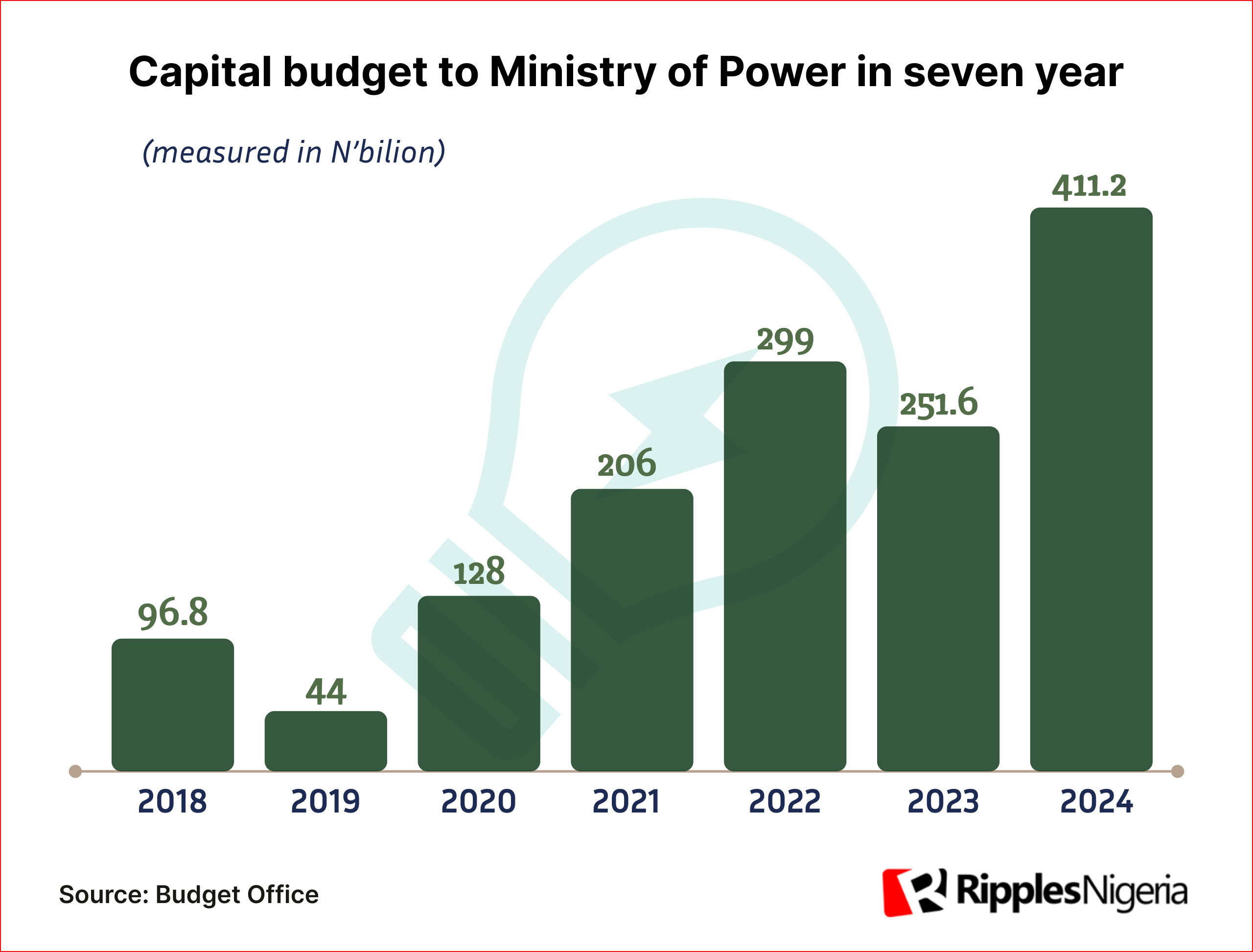Ripples Metrics
RipplesMetrics: Nigerians can have 24hrs electricity if each person pays N73,000 annually

More than half of Nigeria’s population is not connected to the national grid, even as a report from the National Bureau of Statistics shows that the total number of customers on the electricity feeder was 12.33 million as of the second quarter of 2024.
Equally notable is the insufficiency of power generated to meet the needs of the few who rely on the grid, which has suffered repeated collapses for over a decade. This year alone, the Transmission Company of Nigeria (TCN) has reported more than seven grid failures.
Despite having the capacity to generate over 16,000 megawatts of electricity, the country often struggles to reach 10,000 megawatts, and at times, quarterly output barely exceeds 5,000 megawatts.
RipplesMetics reports that between 2010 and October 14, 2024, Nigeria’s power grid suffered a staggering 230 collapses, comprising 161 total grid collapses, resulting in complete nationwide power outages, and 69 partial grid collapses, affecting specific regions or sections of the country.
A look through at budget expenditure also showed that the federal government, between 2018 and 2023, approved N829.788 billion for various electricity infrastructure projects. Similarly, the revenue of DisCos has grown from ₦278 billion in 2015 to ₦828 billion in 2022, marking an increase of nearly 200 percent.
READ ALSO: RipplesMetrics: Nigeria’s IGR per capita continues revenue decline
But all these have still not brought an improvement in the power sector. For this report, RipplesMetrics analyzes the per capita contribution to the power sector, based on the assumption that each Nigerian could contribute financially to address the country’s electricity challenges.
What Nigerians need to pay
In a recent interview, the Minister of Power, Adebayo Adelabu, said that $10 billion of investments was needed annually in the next ten years to revive the nation’s power sector and end the liquidity challenge.
The Minister said, “For this sector to be revived, the government needs to spend nothing less than 10 billion dollars annually in the next 10 years. This is because of the infrastructure requirement for the stability of the sector, but the government cannot afford that.”
Based on these figures, RipplesMetrics estimates that if each Nigerian were to contribute the required amount, every citizen would need to pay approximately ₦73,000 annually for the next 10 years.
This calculation was made by converting $10 billion to naira using an exchange rate of ₦1,687.51, resulting in ₦16.87 trillion annually. Dividing this amount by the estimated population of 232,679,478 people means each Nigerian would need to contribute approximately ₦72,525.
This highlights the significant financial burden that would fall on individual citizens if solving the country’s electricity challenges were solely reliant on personal contributions. It underscores the need for sustainable policies, efficient management, and increased investment in the power sector to achieve lasting solutions.
By: James Odunayo
Join the conversation
Support Ripples Nigeria, hold up solutions journalism
Balanced, fearless journalism driven by data comes at huge financial costs.
As a media platform, we hold leadership accountable and will not trade the right to press freedom and free speech for a piece of cake.
If you like what we do, and are ready to uphold solutions journalism, kindly donate to the Ripples Nigeria cause.
Your support would help to ensure that citizens and institutions continue to have free access to credible and reliable information for societal development.




























